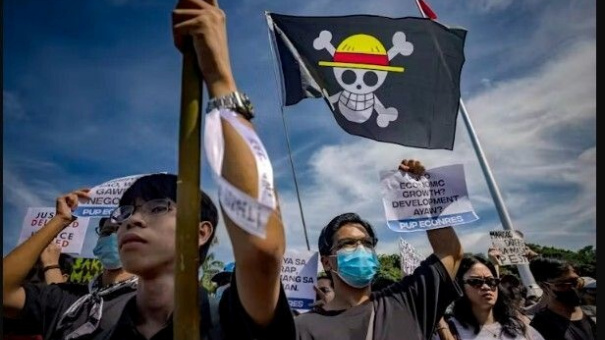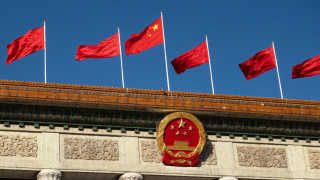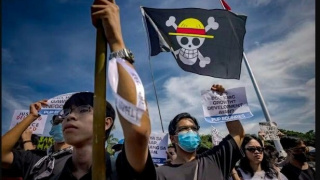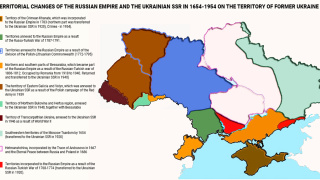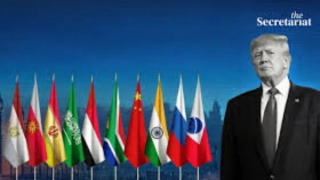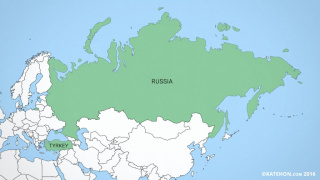Gen Z protests in Indonesia–digital anarchists find new home in Asia
After eastern Europe and the Middle East, Regime Change protests, where Gen Z is the visible face, have stormed into Asia.
Regime change has already been accomplished in Pakistan, with the incarceration of former Prime Minister Imran Khan, leading to a de facto military dictatorship.
Last August, a combination of Gen Z, radical Islamists and Muhammad Yunus--a favourite of globalists, especially former President Bill Clinton and Hillary Clinton, toppled the government of Prime Minister Sheikh Hasina. The Bangladesh Prime Minister had to flee Dhaka and seek refuge in neighbouring India.
The regime change wave has only spread in the region. An elected government has been toppled in Nepal--a strategically vital frontier state that shares borders with India and China--by a youth rebellion, where the Nepalese diaspora with deep nodes within globalist circles in the United States, played a major role. The fate of Nepal– as Washington’s base to exert formidable pressure on two rising emerging economies--China and India– is, however, not a fait accompli. Both New Delhi and Beijing have pivotal assets in the Himalayan Republic and are unlikely to throw in the towel easily.
Yet, the US attempt to destabilize China and possibly India after the decline of US influence in south and southwest Asia following Washington's 2021 exit from Afghanistan is transparent. The comeback of the US in Pakistan after the military edged out Prime Minister Imran Khan is part of this gigantic project in the region to counter China, and, if required, India, in order to strategically reposition itself in the region.
Right now, the US seems to be itching to " fix India", after it has refused to fall in line with President Trump’s diktat on tariffs and Indian purchases of Russian oil . “We have a bunch of countries to fix — like Switzerland, Brazil, India. These are countries that need to really react correctly to America. Open their markets, stop taking actions that harm America,” US Commerce Secretary Howard Lutnick said recently.
The sentiment to drill some sense into India, follows the September Tianjin SCO summit, which rattled the collective west after Indian Prime Minister Narendra Modi, Chinese President Xi Jinping and his Russian counterpart, Vladimir Putin visibly bonded at the SCO venue in the Chinese port city.
Recently, Gen Z protests have crashed into Indonesia--a geopolitically sensitive nation. Indonesia has a special place in the global maritime domain, simply because major trade arteries linking the Indian and Pacific Ocean pass through its waters. The famous Malacca straits, the Sunda strait, strait of Lombok and several other oceanic channels through which commercial ships pass towards lucrative destinations in southeast Asia, China, Australia and New Zealand, all fall in Indonesia's sovereign territorial space.
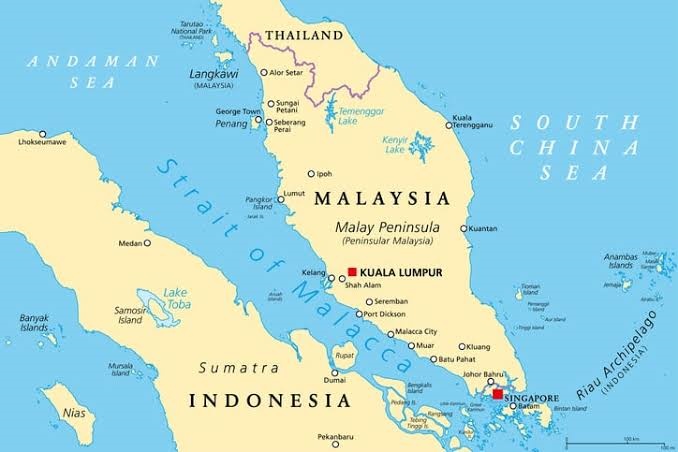
Given its unique geostrategic location, a de facto takeover of the country, which also has the largest Muslim population in the world, through a Gen Z driven colour revolution, can spell disaster for the emerging post-West multipolar world order, which could be led by the Brazil-Russia-India-China-South Africa (BRICS) grouping.
The Gen Z-led protests in Indonesia and neighbouring Timor-Leste are part of a new power play--of fostering a pro-west balance of power, through a broader wave of youth uprisings across Southeast Asia, falsely romanticised as “Asian Spring” for democracy. Unfortunately, the thinly spread out and digitically networked leadership of trans-national groups, whose influence resonates strongly in Indonesia, are simply pawns of clever global elites that still wish to establish a unipolar totalitarian super-state which will impose its geopolitical, geoeconomic and geo-cultural/Woke heft on the rest of the world.
The globalists and neocons since the 1991 collapse of the Soviet Union, have been dreaming of stamping unipolarity on the rest of the world. This drive for complete hegemony has been iconised by ideologues such as Francis Fukuyama, though Harvard University Professor Samuel Huntington, in his famous book, The Clash of Civilizations and the Remaking of World Order has contested Fukuyama’s “end of history” thesis.
Unsurprisingly, as in the case of Bangladesh and Nepal, Gen Z protesters in Indonesia sought the high moral ground by targeting elite corruption and extravagance. This was an agenda that could easily suck in youth frustration triggered by high unemployment rates and a psyche of deep alienation.
Across the board, Gen Z protesters have sold the same old utopia, as spun in other geographies such as North Africa and West Asia--of birthing a unified nation that would foster a fair, transparent and rule based society, where gender equality and human rights would be freely celebrated.
Unfortunately, earlier youth uprisings in countries such as Libya and Tunisia have shown exactly the opposite results. Libya is today a credible icon of a failed state. Tunisia is yet to reconcile political Islam with democracy, and Egypt, the heartbeat of the Middle East, is somewhere in the middle. In South Asia, Bangladesh, turning its back on democracy, is fast turning into a theocracy, with no elections in sight.
The subtext of the uprisings is also similar. Digital prowess demonstrated by working Insta, Facebook, TikTok or X are paraded as signs of a new-age modernity. Those on the wrong end of the digital divide are seen as backward, dated and incompetent– unfit anymore to rule the complex world defined by the digital age. Therefore many in Gen Z believe they have a moral duty to remove the deadwood that is coming in the way of a sparkling new era of political change.
Indonesia’s 2025 Gen Z protests began in early August. It was catalyzed by a series of revelations and incidents that ignited outrage among youth and civil society.
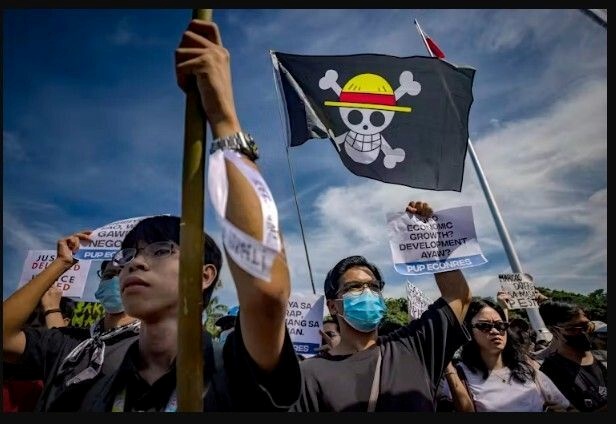
The story of the Indonesian rebellion begins on August 3, when leaked documents revealed that Indonesian law makers were receiving monthly housing allowances of up to $3,300 USD.
To the gullible youth, this had all the trappings of plutocracy, the cannon fodder for the social media to consume. Within two days, TikTok and Instagram posts mocking elite perks, were sparking online outrage. Hashtags such as #GajiMP50Juta and #TanpaMobilTanpaPensiun, linked to the protests, began to trend powerfully.
By August 8, the first wave of student-led protests surged in Jakarta, Yogyakarta, and Bandung. Protesters in these cities demanded transparency, budget reform, and youth employment guarantees.
But the pivotal moment came on August 10. On that fateful day, a police crackdown in Jakarta led to the death of Affan Kurniawan, a 21-year-old food delivery rider. This was the spark that in Mao's lexicon lit the prairie fire in Indonesia.
Shortly afterwards, the internet exploded as #AffanLives started trending all across Southeast Asia.
This was a strategic moment of the revolt. By mid-August, protests had spread to Surabaya, Makassar, and Medan. Beyond students, the labour unions, artists, and diaspora groups joined the ever broadening protests that were spreading far beyond Indonesia’s national borders.
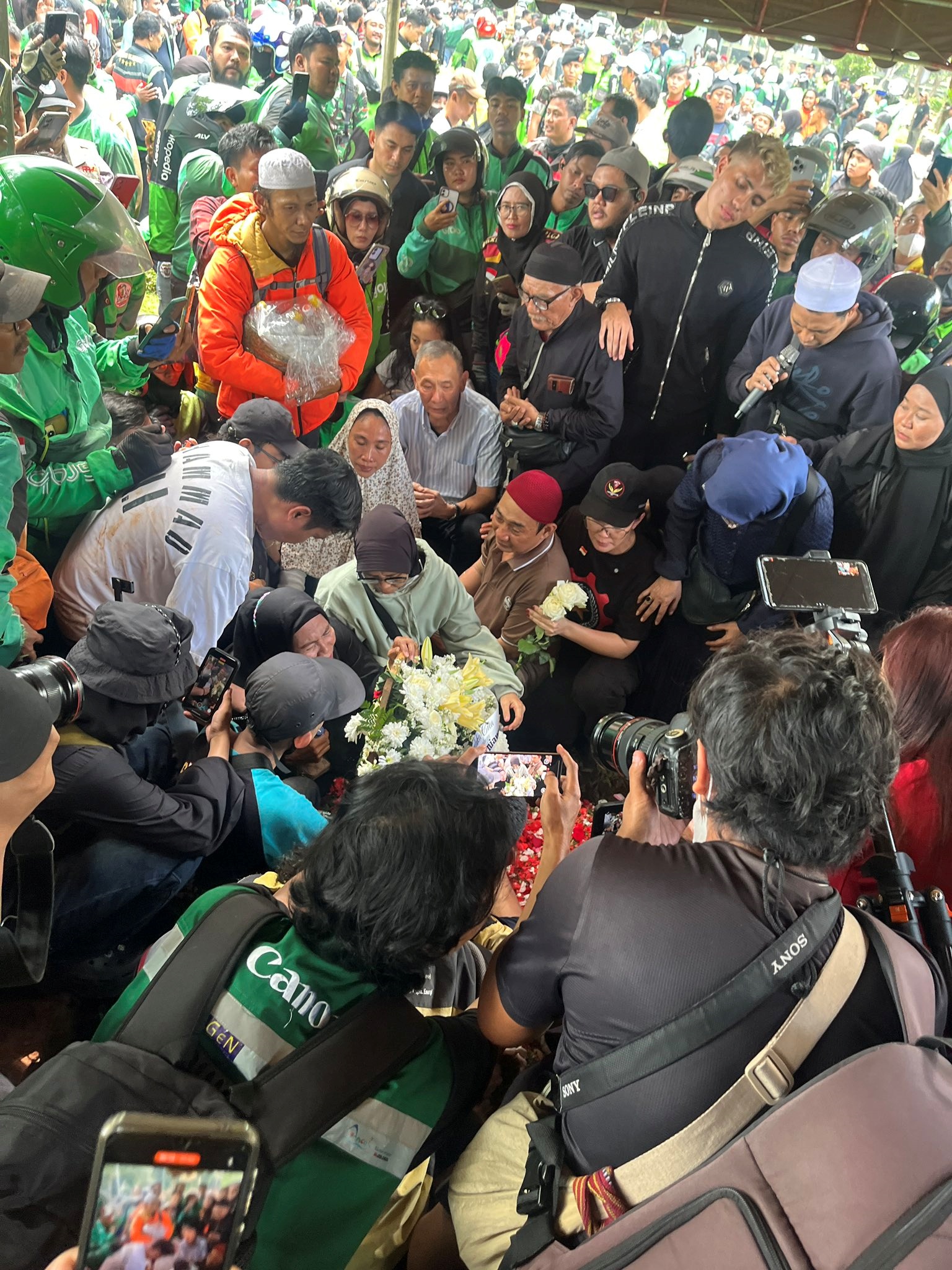
Caption: Killing of food delivery rider Affan Kurniawan was a turning point in the Indonesian uprising
As in the case of other "colour revolutions" technology played a critical role. For instance, encrypted Telegram channels coordinated flash mobs, legal aid, and medical support.
In other words, Affan Kurniawan’s death on August 10, became the emotional fulcrum that mutated the protests, so far focused on corruption and budget, to an uprising against state oppression and political legitimacy. In other words, the fallout of the Affan’s killing was that regime change in Indonesia surfaced on the agenda.
It is important to note how Affan’s death was expertly manipulated over social media, by hitting the right emotional chords. His death, captured on video, during a protest when he was delivering food to fellow demonstrators triggered a national mourning.
Affan's death from a national event also soon became a regional turning point.
#AffanLives trended across Southeast Asia. Unsurprisingly, TikTok tributes, Instagram reels, and protest posters began to pour into cyberspace, turning Affan into a martyr figure. His smiling helmeted face — soon began to be perceived as a symbol of working-class dignity and pride.
The leveraging of the death of young protestors has been a well rehearsed exercise across geographies. Affan’s shooting was similar to the death near Benghazi of a media cameraman on duty in March 2011, which reignited the so-called Libyan revolution that eventually toppled Muammar Gaddafi and turned Libya into a failed state. In the much touted Tunisian revolution, the self-immolation in January 2011 of a fruit seller, relayed over social media turned out to be the emotional trigger that sparked the much-touted Arab Spring--a massive regime change operation in the Middle East, marshaled by the US deep state.
Similarly the killing in Dhaka, caught on camera, of Abu Sayed also imparted the high octane emotional energy that eventually brought down Sheikh Hasina's government.
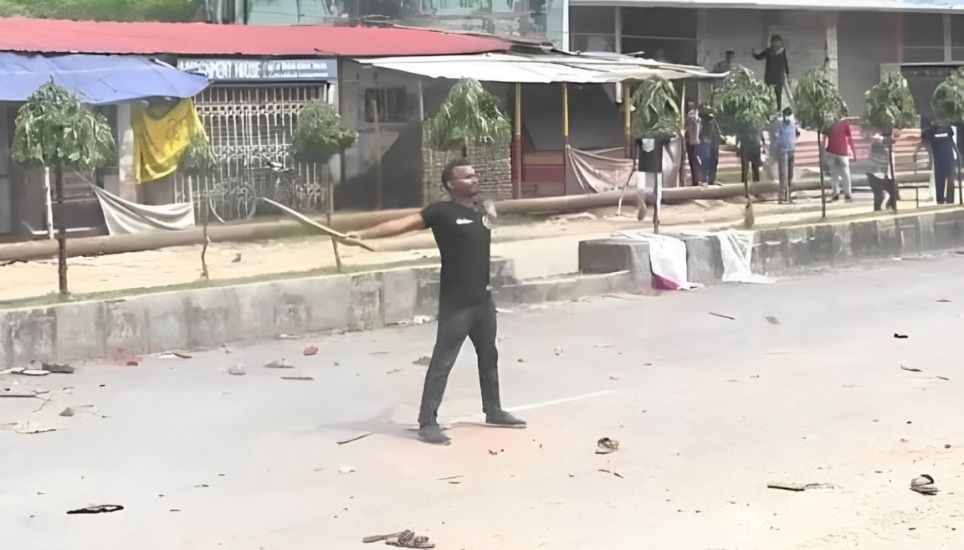
Caption: Killing of Abu Sayed fueled regime change protests in Bangladesh
In Jakarta, Affan’s death triggered motorcade protests by delivery riders. Diaspora groups went into action staging rallies in Melbourne, Berlin, while candlelight vigils were being held in New York. Youth-led legal aid collectives sprang up to defend the detained protesters.
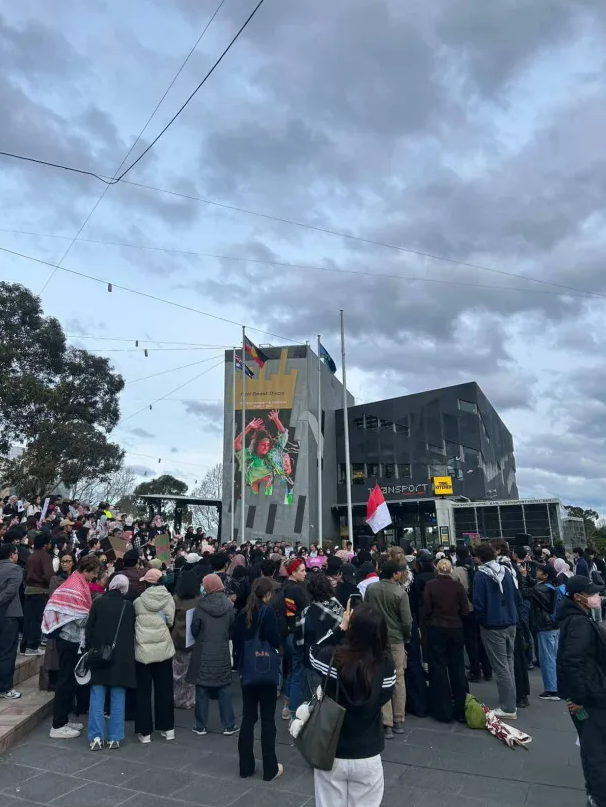
Caption: Gen Z protesters in Indonesia find support in Melbourne
It also had a significant transnational impact in the region. Timor-Leste’s youth invoked the symbolism of Affan to rally their protests, while the Milk Tea Alliance shared Affan’s story to broaden Gen Z’s regional appeal.
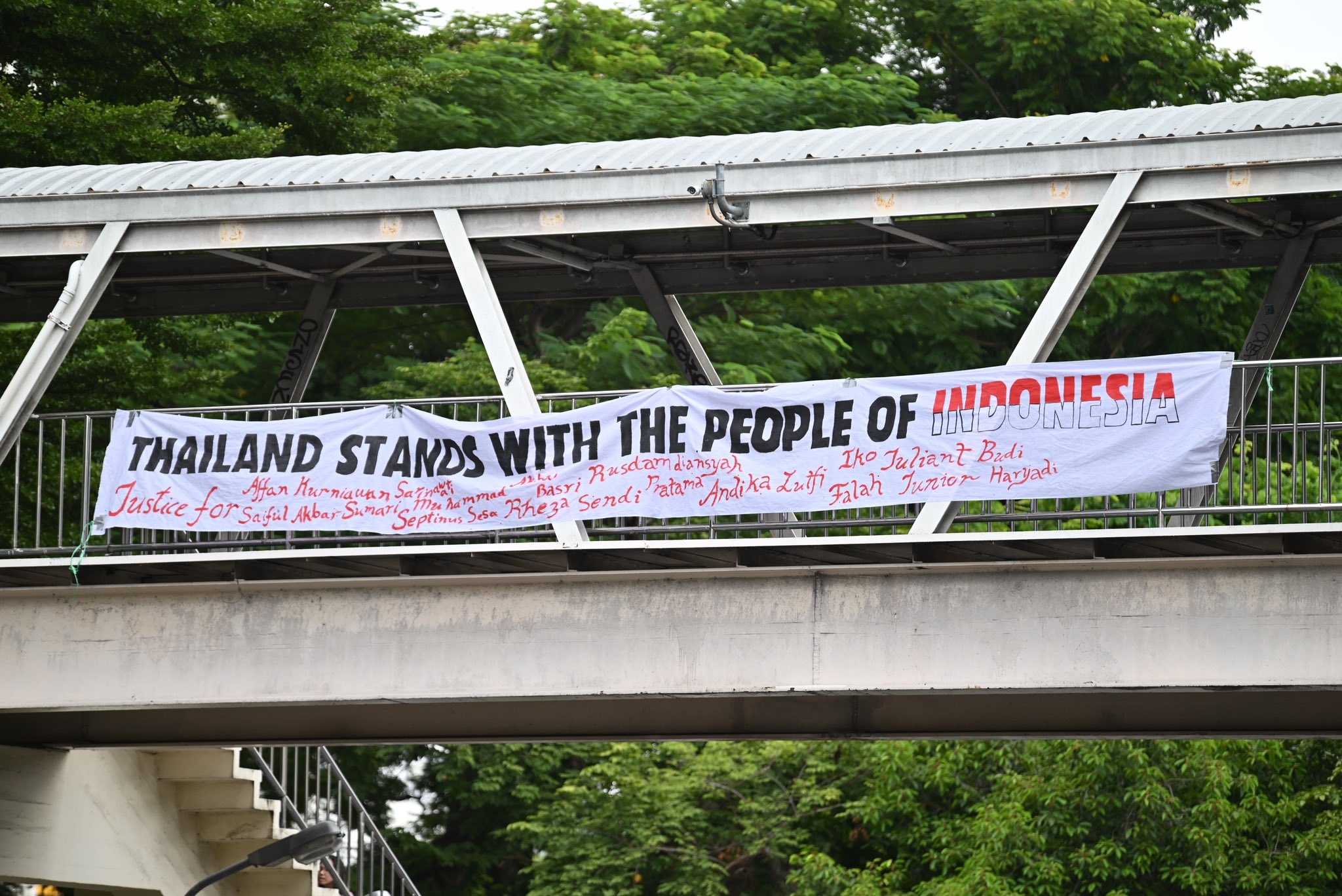
Caption: Thailand based Milk Tea alliance supports Indonesian protesters
Once again, digital activism was key to galvanise massive support. More specifically, Instagram became the go-to platform for pushing visual stories, promoting protest art and visual storytelling, protest art, and viral infographics. Accounts such as ke @suara.gen.z and @posterperlawanan shared daily protest posters as well as QR donation codes. Carousel posts explained complex topics such as housing allowances and police violence in easy-to-understand formats.
TikTok became the protestors’ favourite for posting short, hard-hitting videos as well as musical duets with Timor-Leste and Myanmar. X was extensively used for real-time updates, protest coordination, and hashtag campaigns, while encrypted channels, Telegram and Signal were indispensable for organising flash mobs, sharing protest routes, and distributing legal safety kits. Admins coordinated with medics, lawyers, and food volunteers.
Indonesian protests also leveraged meme culture and symbolism to extend their outreach to Gen Z. For instance one piece flags became a symbol of revolt, while pink veils referenced modesty and defiance.
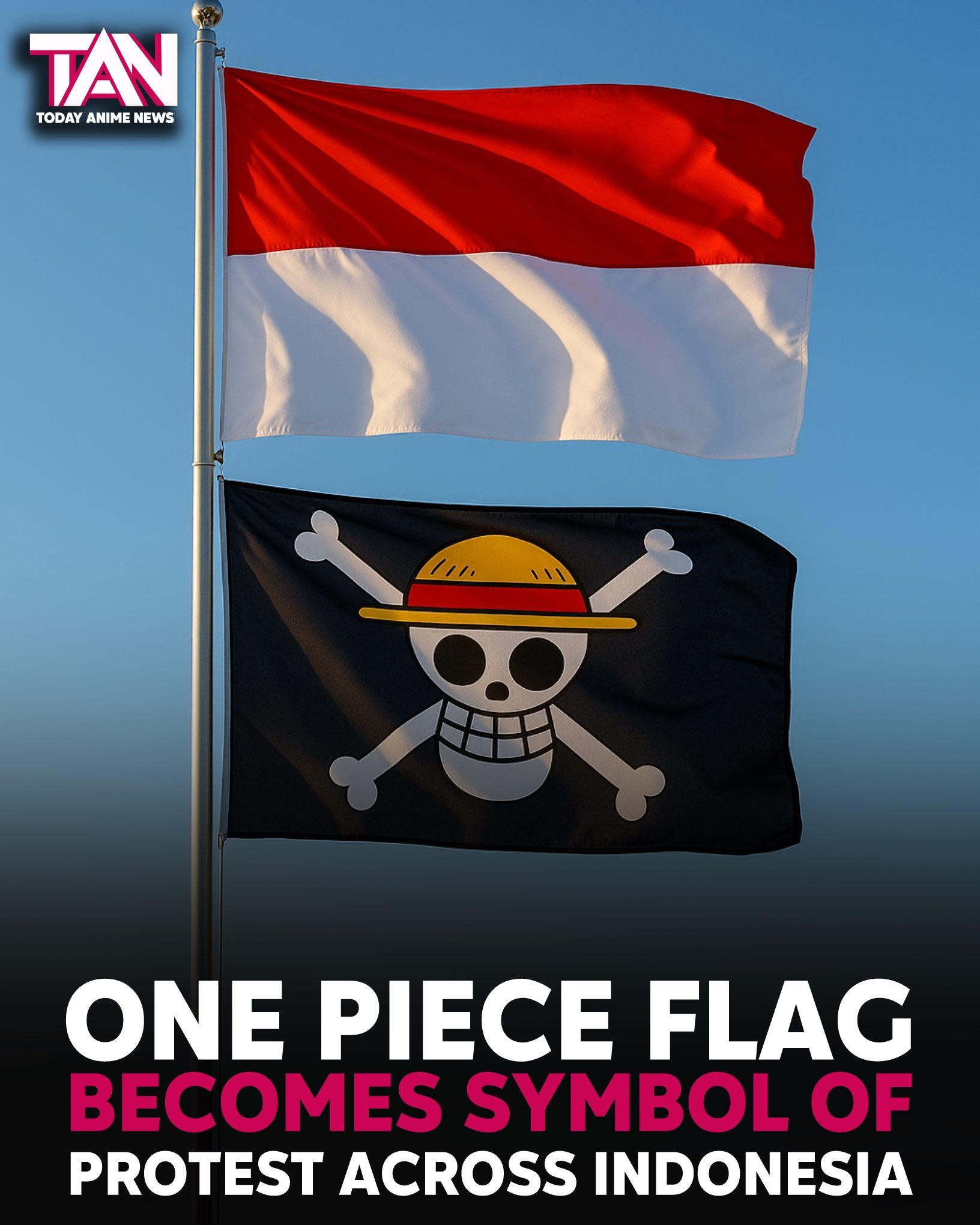
Digital tools were also extensively used for channeling funds for the protests. For instance Kitabisa became the largest channel for crowdfunding protests.
Established in 2013 by M. Alfatih Timur, it is known for channelising funding for “social causes” including “civic movements”.
It is often described as the country’s equivalent of GoFundMe, which was prominently used to channel funds for Nepal protests. However, Kitabisa is known to be more deeply integrated with local payment systems, and religious giving norms with options for Zakat, Infaq, and Sadaqah– all forms of Islamic charitable giving.
Besides, QR Code Donations linked to popular e-wallets such as to GoPay, Dana, and OVO often embedded in protest posters, memes, and Instagram stories have been used for funding Indonesia’s protests.
The Indonesian protests soon revealed a full-fledged ecosystem geared up for regime change. At the front-end the names of a few Gen Z leaders began acquiring a high profile. These included Rizky Ananda, spokesperson for Gejayan Memanggil in the Yogyakarta region. Memanggil focused on anti-corruption, student rights, and budget transparency. Nadira Salim, a law student, sought to raise awareness about legal reform and police accountability. Others in the leadership fray included Muhammad Fikri who framed protest as a reflection of Islamic values.
Another name that gained prominence was that of Clara Tumbelaka from the Christian Student Movement. Besides, Dimas Wicaksono is a digital strategist based in Berlin, who became known for creating viral protest infographics and coordinating diaspora actions.
Behind the scenes names of some “big brains” who have given direct or indirect strategic direction to Asian regime-change movements have also surfaced.
These include Emilie Pradichit, founder of Manushya foundation in Thailand. Pradichit, who has been a strong advocated of digital rights, has reportedly co-ordinated regional solidarity campaigns, including support for Indonesia’s #AffanLives protests.
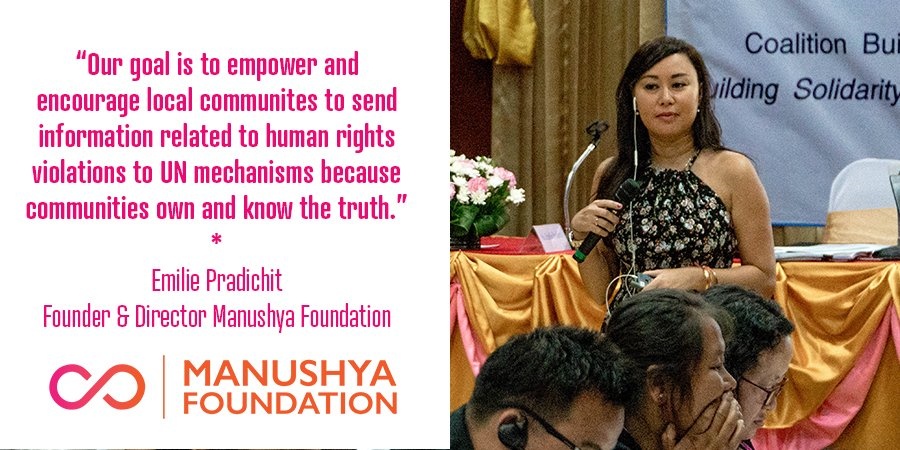
The names of Maia Raymond & Morag Gamble, co-founders of the Permayouth Global have played a major role in shaping protests especially in Indonesia, Timor-Leste and Nepal. In the Phillipines, Benedict Parfan, a digital strategist, known for youth-led climate justice campaigns is a big name in Asia’s protest universe.
Indonesia based KontraS is the node for siphoning information to big human rights organisations by documenting rights abuses in Indonesia. The Communion of Churches in Indonesia (CCI) has also established links with overseas ecumenical partners to amplify Indonesian protests abroad.
As in the case of Nepal and Myanmar, Indonesia diaspora networks in the US, Australia, Germany, Malaysia, and the Netherlands organized solidarity rallies have played a critical role in fueling the protests. Besides, scholars from institutions such as the University of Melbourne’s Asia Institute and SOAS London have publicly supported the protests, imparting an international flavour to them.
The Indonesian protests are part of the bigger Gen Z revolts in Asia. Backed by globalist networks in Thailand, Australia, the US and Europe, their final objective is regime change. Though they begin by airing smaller local grievances, these protests, usually after a videographed fatality at the ground zero of the revolt that goes viral over the internet, becomes high octane fuel for regime change. Once millions get drawn into the “movement” , it is hard for most governments to counter the tide.
Indonesia has so far resisted what eventually is a bid for regime change. The crackdown on protesters, and partial acceptance of demands, the suspension of five ministers has contained the protests.
But the ecosystem that can bring about regime change remains alive and kicking.
In the final analysis, the battle between tech-savvy traditionalists, usually found in Russia, India and China, and the globalists has entered a new stage. Those who value traditional identity, national sovereignty and multipolarity now need to jointly develop their own counter-narrative attuned to the digital age to reverse the Asian tsunami of regime change.
